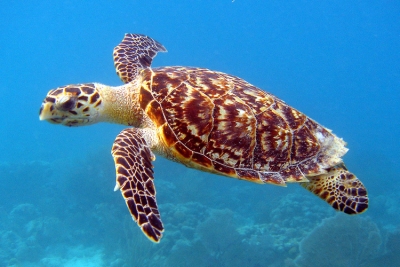WHAT KIND OF CREATURES ARE BATS?

Bats, of which there are more than 1300 species, are the second largest group of mammals. Megabats, also known as fruit bats because of what they eat, can have a wingspan of just under two metres. The flying fox is the largest bat. The smaller microbats are mostly carnivorous and eat insects; even small amphibians. Vampire bats are the only microbats that feed on animal blood.
More than 40 species of bats live in the United States. Bats are the only mammals that can fly. Instead of arms or hands, they have wings. The wings have a bone structure similar to the human hand. Between the bones are flaps of skin. Bats are very light weight to make it easier for them to fly. The western pipistrelle bat weighs less than a penny, while the greater mastiff bat weighs about two ounces (57 grams).
Bats have fur on their bodies, sometimes including their head. Their wings, however, do not have fur. Bats can be a range of colors, including red, tan, brown, and gray. A bat's ears are very important because bats use them to hunt for food. The ears tend to be large and noticeable, many times sticking up on the side of the head. The Allen's big-eared bat has ears so long that they make up two thirds of its body length.
The smallest bat in the United States is the western pipistrelle bat, which grows to about 2.5 to 3.5 inches (six to nine centimeters) long with an eight-inch (20-centimeter) wingspan. The largest bat in the U.S. is the greater mastiff bat. It can grow as long as seven inches or more with a wingspan of 21 to 23 inches (53 to 58 centimeters).
The majority of bats in the United States are insectivores. They hunt at night and eat flying insects such as mosquitoes, beetles, and moths, many of which are considered pests. Bats provide an important ecological service by eating tons of insects. In a single midsummer night, the 20 million Mexican free-tailed bats from Bracken Cave in central Texas eat more than 200 tons of insects.
Not all bats eat insects. Some live on a diet of nectar and fruit. Bats that feed on nectar also serve as pollinators to nighttime blooming plants. To attract these flying mammals, flowering plants have evolved a musty or rotten perfume. The smell is created by sulphur-containing compounds, which are uncommon in most floral aromas, but have been found in the flowers of many plant species that specialize in bat pollination.
Vampire bats do exist, but there are none in the United States. The closest vampire bats are found in Mexico.
Insect-eating bats hunt using a type of natural sonar called echolocation. They emit a high-frequency sound (undetectable to people) that bounces off surrounding objects. When a sound hits an object, or better yet, an insect, it bounces back to the bat's pronounced ears and gives the bat an audible map for the shape, distance, and location of nearby objects. Everything happens so quickly that a bat can make almost instant turns to catch a flying insect. A bat's echolocation system is so advanced and precise that scientists study bats to make sonar equipment for ships.
A bat's nose can be very useful characteristic for identifying a bat species. Some are small and simple, others are shaped like a pig's nose, and some even have noses shaped like leaves.
Credit : The National Wildlife Federation
Picture Credit : Google













